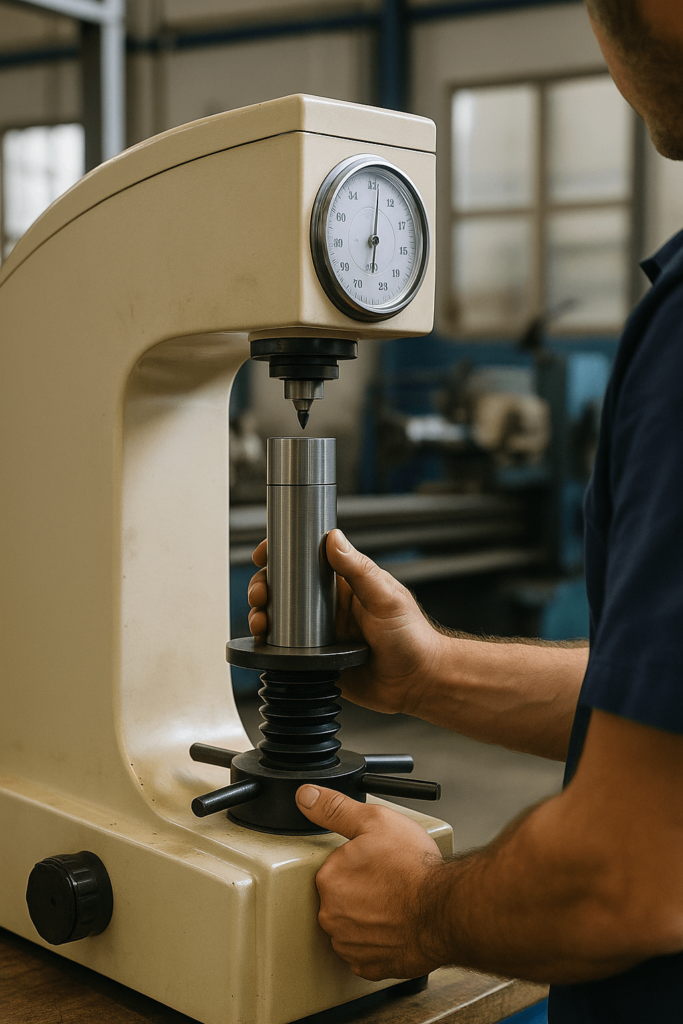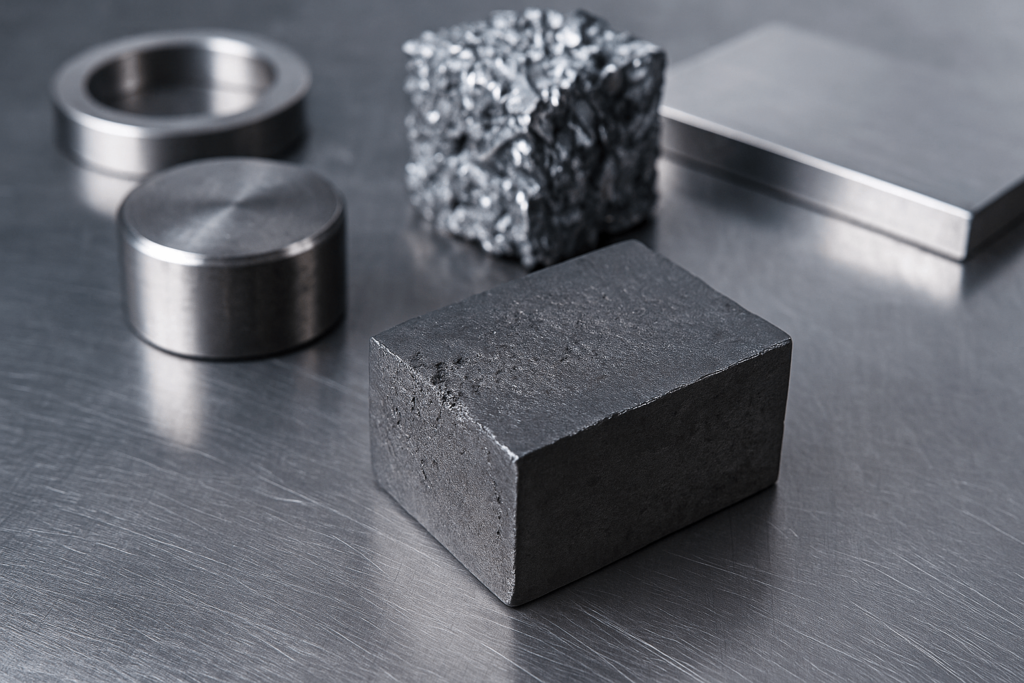In global sourcing, especially in metal fabrication, one recurring question remains relevant: what is the hardest metal, and how does it impact real-world procurement? For wholesale buyers working across industries such as automotive, construction equipment, and industrial tooling, the performance of high-hardness metals is not theoretical—it defines uptime, cost, and downstream efficiency.
This guide by YISHANG is written with industrial buyers in mind. It examines the real implications of hardness, how it affects sourcing and performance, and which metals—like tungsten, chromium, and titanium alloys—are leading the way in durable applications. Instead of repeating lists of “what are the hardest metals,” we link material performance to procurement goals like longevity, machining cost, and certification needs.
Understanding Metal Hardness: More Than Just Numbers

Metal hardness is often mistaken for strength or toughness. But for industrial buyers, it’s vital to understand the distinction. Hardness refers to resistance to indentation or abrasion, typically relevant in wear-prone environments.
In the context of sourcing, hardness impacts tool life, surface finish, and even logistics. A material too hard may lead to longer machining times or special tooling needs. Conversely, under-spec materials cause early failure—an unacceptable risk in precision tooling or infrastructure parts.
Common metrics buyers will encounter include:
| Hardness Scale | Description | Use Case Example |
|---|---|---|
| Mohs | 1–10 scratch resistance scale | Basic classification for minerals |
| Vickers (HV) | Measures indentation size | Technical drawings, QA reports |
| Rockwell (HRC) | Measures penetration depth | Mass production QC |
| Brinell | Large load indentation test | Structural/softer metals |
For RFQs and quality control, always align on which scale is used. This avoids disputes post-shipment, especially for parts specified with heat treatment or tolerance-sensitive requirements.
The Hardest Metals and Their Value in Procurement

Tungsten: Highest Hardness, High Risk–High Reward
Tungsten’s Vickers hardness near 3430 HV makes it unmatched among industrial metals. However, its density (19.25 g/cm³) and brittleness mean it’s not universally applicable.
Buyers often opt for tungsten carbide, a composite used in CNC inserts, drilling heads, and wear tools. It’s known for minimizing tooling changes, especially in high-output machining lines. Confirm:
Carbide grain size (impacts wear rate)
Cobalt content (affects toughness)
Country of origin (impacting cost and lead time)
📌 Real Example: A French aerospace components buyer increased tooling change intervals by 60% after switching to tungsten carbide punches from high-speed steel—despite a 30% higher unit cost.
Chromium: Surface Hardness Meets Corrosion Control
Chromium, with a Mohs hardness of 8.5, isn’t just hard—it’s also protective. It is widely used in stainless steels (like 304 and 316) and in decorative or anti-corrosive plating.
For buyers, sourcing chromium-rich materials means specifying surface treatment quality. Poor plating causes early delamination or rusting—serious issues for outdoor or high-humidity applications.
Look for:
Verified plating thickness (measured in microns)
REACH or RoHS compliance
Surface adhesion testing
📌 Practical Insight: In food-processing machine exports to South America, YISHANG increased customer retention by 22% after standardizing chromium finish thickness to ≥12 microns with double-bonding process.
Vanadium and Specialty Alloys: Cost-Efficient Strength Boosters
Vanadium is rarely used on its own. However, even small percentages in steel alloys enhance tensile strength, fatigue resistance, and heat performance.
This is especially valuable in:
Automotive tools (impact sockets, suspension parts)
Oilfield steels (for high-pressure pipes)
High-speed steel (HSS) used in tool bits
When requesting quotes, clarify the vanadium percentage. Anything over 0.15% may alter pricing and hardenability but gives significant performance ROI.
Titanium Alloys: Lightweight with Just Enough Hardness
Titanium may not top the Vickers scale, but it often wins the procurement decision. It delivers corrosion resistance, moderate hardness, and low density—ideal for aerospace, marine, and medical sectors.
Grade 5 titanium (Ti-6Al-4V) offers HRC 36–40, with tensile strength over 950 MPa. More importantly, it reduces unit weight, saves shipping cost, and enhances long-term corrosion stability.
Procurement tips:
Request biocompatibility certification for medical-grade parts
Confirm welding method if post-fabrication joining is needed
Account for longer machining lead times
📌 Case Insight: A US-based orthopedics client reduced implant weight by 40% with YISHANG-supplied titanium components, enabling faster regulatory approval under ISO 10993.
Procurement Impacts: Where Hardness Meets Real-World Costs
Selecting “what is the strongest metal in the world” becomes irrelevant if it can’t be machined or sourced economically. In actual purchasing cycles, hardness affects:
Processing costs: Harder metals require carbide tools, lower feed rates, and tighter tolerances
Failure risk: A brittle hard material can chip or crack without proper design
Inventory value: Higher material cost means higher working capital and risk
📊 Performance vs. Cost Comparison Table
| Material | Hardness (HV) | Machinability | Cost Impact | Typical Use |
| Tungsten | ~3430 | Low | High | Drilling heads, military-grade tooling |
| Chromium | ~1120 | Medium | Medium | Plating, corrosion-resistant parts |
| Titanium Alloy (Ti-6Al-4V) | ~400 | Medium | High | Medical implants, aerospace |
| Vanadium Steel | ~200–300 | High | Low | Auto tools, construction bolts |
Balance performance with budget and maintenance realities. Not all hardness is productive hardness.
Application-Specific Considerations for B2B Buyers
When buying in bulk or custom projects, consider where hardness adds value:
CNC & Molds: Request Rockwell 60+ for tool steel. Confirm hardening process—gas nitriding vs. oil quenching.
Medical: Use ISO 5832-3 certified titanium; biocompatibility must be proven.
Automotive: Vanadium steel with documented yield strength (min. 800 MPa) and fatigue testing is essential.
Professional buyers should also request:
Hardness testing reports (in HV or HRC)
Material Traceability Certificates (MTCs)
RoHS or ISO 9001 compliance
Suppliers like YISHANG can provide pre-shipment QC data, including hardness values and batch-level QA. This ensures performance metrics are met before parts leave the factory.
Future Materials: The Evolution of High-Hardness Procurement
Beyond traditional metals, engineered materials are shaping new sourcing options. For example:
Cermets: Ceramic-metal hybrids offering high hardness and improved fracture resistance.
High-entropy alloys (HEAs): Blend of five or more metals designed for advanced structural use.
Nano-structured metals: Increased dislocation resistance means higher effective hardness.
These are not yet mainstream, but their rising adoption in aerospace and advanced tooling signals long-term relevance.
Forward-thinking buyers should monitor which suppliers are early adopters. As global regulations and performance expectations evolve, having supply partners who innovate can ensure continued product competitiveness.
Frequently Asked Questions
Q1: What is the hardest metal in the world?
Tungsten is widely considered the hardest pure metal in terms of Vickers scale. In real-world use, tungsten carbide is more common due to its enhanced usability.
Q2: Are harder metals better for all applications?
Not always. Hardness improves wear resistance but may reduce machinability or increase cost. Always align metal selection with functional needs.
Q3: What certifications should I request when sourcing hard metals?
Ask for MTCs, HRC/HV test reports, and if relevant, ISO certifications. For tooling, hardness should be part of QA documentation.
Q4: How can I ensure material hardness matches my needs?
Clarify hardness range on your drawings or PO. Include post-treatment specs like case hardening, nitriding, or induction.
Q5: What are the strongest metals vs. the hardest metals?
Strength relates to yield/tensile performance; hardness resists surface deformation. Titanium, for example, is strong and light but less hard than tungsten.
Conclusion
For B2B procurement professionals, the question isn’t just “what is the hardest metal”—it’s which material performs best for the job, within cost, compliance, and timing constraints.
Whether it’s tungsten for cutting tools, chromium for corrosion-resistance, or titanium for weight savings, hardness is just one metric. Partnering with suppliers like YISHANG ensures that your materials meet more than just a spec—they support your project success from prototype to production.
